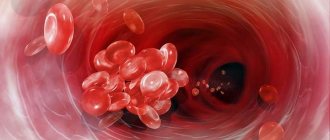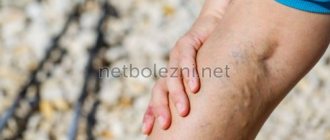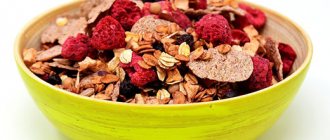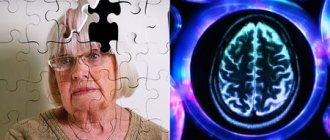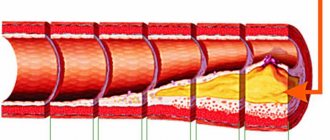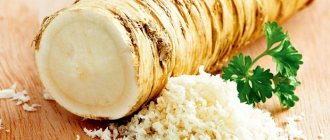The circulatory system is an extremely complex mechanism that strives to maintain stable conditions in the body. Vessels are capable of contracting and expanding, depending on external and internal factors. For example, when the body cools, the peripheral vessels narrow in order to spend less heat on warming the extremities and, thereby, saving it for the internal organs. Nicotine, which enters the blood after smoking a cigarette, also constricts blood vessels. Any stress causes vasospasm to adapt the body to danger.
Why is vasoconstriction dangerous?
Reducing the diameter of blood vessels is a dangerous condition
But the factors listed above lead to a temporary narrowing of blood vessels, and after a short time they return to normal. But there are a number of conditions that can cause long-term vasoconstriction. This can lead to a number of serious consequences.
With normal pressure created by the heart muscle, with narrowed blood vessels, the tissues receive too little oxygen and nutrients. To compensate for this, the heart is forced to work harder. Because of this, blood pressure increases, and the walls of blood vessels experience increased stress.
Constant vascular spasm is a prerequisite for the development of a huge number of diseases: severe headaches, high blood pressure, heart failure, heart attack and stroke.
Damage to the blood vessels of the brain is especially dangerous in this regard, since constantly narrowed blood vessels reduce the quality of its nutrition and impair its functioning, leading to impaired memory, attention, decreased performance, and so on.
Vasodilators for the brain
Vasodilator drugs used to treat cerebral vessels have some peculiarities in their effects on the body. The main disadvantage of using these vasodilator drugs is the effect on other vascular systems, which often causes a strong decrease in blood pressure. Therefore, these vasodilators are not prescribed to patients who are prone to hypotension. The result can be completely opposite. For this reason, medications that dilate blood vessels in the brain are prescribed individually to each patient.
The best vasodilators for healing the cerebral vascular system are as follows:
A vasodilator for the brain, Piracetam is a drug that accelerates the removal of glucose, which normalizes the blood supply to the blood vessels of the brain, relieves headaches and dizziness. It is produced in different pharmacological forms: tablets, syrups, solutions for injections and intravenous administration.
A vasodilator for the brain, Mexidol , is a drug that normalizes blood supply to the brain, saturates the brain with oxygen and nutrients, lowers the amount of cholesterol, and dilates blood vessels. A vasodilator drug for the brain is produced in tablet and injection form.
Actovegin,
a vasodilator for the brain .
This is a vasodilator drug, which is successfully prescribed as a vasodilator for the brain, accelerates the release of glucose, and normalizes metabolic processes at the cellular level. Vasodilator drugs for the brain, used in the treatment of cerebral atherosclerosis, help improve blood flow in the brain and have a positive effect on the walls of venous and arterial vessels.
The following vasodilator drugs can quickly expand the blood vascular system of the brain:
Vasodilator drug for the brain Papaverine . This medication is prescribed to relieve spasms in the brain. In addition, papaverine is well used to relieve spasms in the smooth muscle cells of the peritoneum;
Vasodilator drug for the brain Cavinton . Prescribed for blood supply disorders in the brain. It has a positive effect on the blood vessels of the brain, widens the lumen in them and removes spasms. It is produced in the form of tablets and solutions for injections.
Vasodilator drug for the brain Angionorm . This medication helps to widen the blood vessels in the brain and increases physical endurance, resistance to stress, and also normalizes the emotional and psychological state.
In addition, almost all medications aimed at treating the vascular system of the brain have a hypotensive effect.
For this reason, the use of vasodilator drugs for the brain is carried out strictly as prescribed by a doctor. In addition, the dosage and frequency of administration must be observed, as well as constant monitoring of the patient’s blood pressure.
Mechanisms of vasoconstriction
Any vessel is a hollow organ that consists of several layers. The outer layer provides its mechanical contraction and expansion. With its help, the body regulates body temperature, dilating blood vessels when overheated and constricting when cooling. But if this mechanism fails, chronic long-term vasospasm may develop.
One of the reasons for the disruption of the mechanism of constriction and dilation of blood vessels is age. The older a person is, the less elastic his blood vessels are.
But there is another mechanism for vasoconstriction - the growth of plaques on its inner surface. Cholesterol and atherosclerotic plaques are deposited on it, which narrows the lumen of the vessel.
In some cases, vasoconstriction may be caused by several reasons, for example, an increase in cholesterol plaques and loss of elasticity of the walls of blood vessels.
In such cases, it is necessary to follow a set of measures that will help slow down the process of plaque growth, as well as loss of elasticity.
Persimmon
The tender persimmon pulp is rich in fiber and pectin. In the intestines, these substances create a viscous mass that absorbs everything in its path: toxins, cholesterol, bile, heavy metal salts. Therefore, persimmon is recommended to be consumed to detoxify the body.
Persimmon also helps blood vessels: by reducing cholesterol levels, it prevents plaque from sticking to the walls of blood vessels. Plus, the fruit is rich in antioxidants - carotenoids. They have an anti-inflammatory effect and protect against cancer.
Persimmon contains carotenoids and pectin (Photo: Pixabay.com)
Drug vasodilation
Today, the choice of drugs for vasodilation is quite wide.
Today there are many medications that can dilate blood vessels. Some of them are used urgently if it is necessary to relieve a spasm, while others are suitable for permanent use, but provide a long-term effect. The most commonly used are the following:
- Nitroglycerine. This simple and affordable drug should be in the first aid kit of every “heart” patient, and people prone to angina attacks should have it with them at all times. It must be used for attacks of angina pectoris - pain in the heart due to physical or mental stress. One nitroglycerin tablet quickly relieves spasm and pain. But this drug is not effective for many diseases and conditions, such as heart attack and stroke.
- Spasmalgon. Another short-acting drug. It cannot be taken on an ongoing basis, but if you need to relieve an attack of headache caused by vasoconstriction, then Spazmalgon is the optimal remedy.
- Papaverine. An effective remedy against vasospasm, but it should only be taken under the guidance of a doctor.
- Calcium channel blockers. This is one of the most common means of combating hypertension. Drugs in this group block receptors that are responsible for vasoconstriction, making the drug effective for the treatment of arterial hypertension.
- Ginko Biloba. Preparations based on this plant are used to combat age-related changes in blood vessels, as well as improve cerebral circulation.
This is only a part of the drugs to eliminate vascular spasms.
To combat the narrowing of blood vessels due to the deposition of cholesterol and atherosclerotic plaques, other drugs are used. There are many commercial forms and names, which the doctor must select in accordance with the diagnostic results.
Is it possible to drink alcohol for this purpose?
Any drink that contains ethyl alcohol has vasodilating properties - this is an axiom.
But can alcohol be used to treat atherosclerosis and high blood pressure (hypertension)? In no case, since ethyl alcohol also increases the frequency of contractions of the heart muscle, which ultimately increases the pressure and wear of the walls of capillaries, arteries, and veins. How do different alcoholic drinks work?
- Beer. When consuming only 100 - 250 milliliters, blood pressure drops (mainly due to the diuretic effect). But if you drink more, your blood pressure increases significantly, as does the overall load on the cardiovascular system. Another negative effect is a sharp increase in blood sugar levels. In case of diabetes mellitus, beer is strictly contraindicated for consumption.
- Wine. Acts in a similar way to beer. That is, when consuming only 30 - 70 milliliters, the vascular lumens of the head expand, and the pressure drops. Further (if you drink more) it increases sharply. This drink will be useful only in small quantities and if consumed not regularly. In this regard, it is better to consult a doctor, since it is necessary to take into account the individual physiology of the patient. And preference should be given to dry red wines (with low alcohol and sugar content).
- Cognac. It acts exactly like wine (it is made from so-called “wine” alcohol). But due to its strength, it almost immediately increases the heart rate and pressure on the walls of blood vessels. Therefore, it is better to avoid this drink (especially if you have liver failure).
- Vodka. Even a small amount of it increases the pressure abruptly. And although drinking vodka reduces the level of bad cholesterol, it also destroys liver cells, the gastric mucosa, and slows down the regeneration of nerve cells. A safe dose of vodka is about 15 – 20 milliliters, no more.
Overall, alcoholic beverages should not be used for this purpose. Perhaps wine, but this should definitely be discussed with your doctor and adhere to the dosage recommended by him.
Nutrition for vasodilation
Cleaning vessels with bay leaves
Proper nutrition is one of the main factors for those who want to know how to dilate blood vessels at home. Without strict adherence to a number of rules, success will not be achieved. The following recommendations must be followed:
- First of all, you need to reduce the amount of animal fats in your diet. You will have to give up butter, pork and lamb, sausages, fatty cheeses, and so on. Fermented milk products should have a minimum amount of fat. You shouldn’t give up meat completely, but preference should be given to chicken, turkey, and lean veal.
- Fish should be included in your daily diet. Fish oil not only does not cause the formation of “bad” cholesterol, which forms plaques, but also reduces its amount in the blood and “cleanses” the circulatory system. Fish can be boiled, baked, stewed, marinated. It is not advisable to fry it or use it in the form of canned food or preserves.
- Fresh fruits, vegetables, leafy salads and greens should be in the daily diet, regardless of the time of year. It is believed that you need to eat at least 5 servings per day, each approximately 200 grams.
- It is best to exclude alcohol from the diet. It does dilate the blood vessels, but its effect is short-lived, after which they can narrow even more.
It is allowed to use cognac as a vasodilator, but only in exceptional cases, for example, with severe stress or hypothermia, and no more than 40-50 milligrams.
Following these simple tips will help reduce the rate of vascular overgrowth. But besides this, it will be useful to use numerous folk recipes for dilating blood vessels at home.
What should you exclude from your diet?
In case of atherosclerosis or arterial hypertension, the following foods that constrict blood vessels should be completely avoided (or their presence in the diet should be minimized):
- Butter and ghee. Although it is necessary for the normalization of brain function, it is one of the largest sources of bad cholesterol. It should be abandoned first of all, especially for people over 50 years of age with chronic diseases of the cardiovascular system. Don't forget that there is also oil that is beneficial for blood vessels.
- Pastries and sweets. In principle, you can add here all foods whose consumption leads to a sharp increase in blood sugar levels (above 8 mmol/l in a healthy person). Their main harm is damage to the walls of blood vessels, which reduces their resistance to stress and increases the likelihood of rupture. Sugar is also bad for the heart. All this also applies to chocolate. But it is worth remembering that cocoa in its pure form slightly dilates blood vessels, helping to combat their narrowing. Cocoa also cleanses the lumens of blood vessels from cholesterol. But all the beneficial properties of cocoa are offset by the sugar in chocolate. Therefore, you should give preference to dark chocolate.
- Fried potatoes. Not only does it increase the concentration of bad cholesterol, but it also contains free radicals (formed during the heat treatment of vegetable oils). Increases the likelihood of the formation of atherosclerotic plaques due to destabilization of lipid metabolism (when fat cells simply do not have time to break down).
- Fatty meats. This includes pork, duck, beef, various kinds of offal and liver (and even rich broths that are obtained from them). It also has a negative effect on lipid metabolism.
- Fat cheeses, yoghurts, sour cream. They are especially dangerous for vascular diseases of the lower extremities; they increase the risk of varicose veins.
- Coffee should also be drunk with caution. For more information about the effect of coffee on the lumen of blood vessels, see our separate material.
In total, there are a lot of products suitable for our purpose. However, they are not harmful in any way, so they should be included in the diet for hypertension, atherosclerosis or varicose veins. And most importantly, the diet should be varied, but with a preference for plant foods, without heat treatment. For a more detailed diet plan, you should seek help from nutritionists.
Folk remedies for vasodilation
The beneficial properties of herbs can also be used to dilate blood vessels.
Traditional medicine, based on the healing properties of plants, has dozens of ways to dilate blood vessels at home:
- Garlic oil. This remedy is one of the most effective and versatile. The head of garlic should be mashed into a paste or finely chopped and placed in a glass jar, filled with a glass of unrefined vegetable oil. Leave the product in the refrigerator for at least a day. Then you need to drink one teaspoon of oil mixed with the same amount of lemon juice three times a day before meals. The duration of the course must be at least three months.
- Hawthorn. This remedy strengthens blood vessels and relieves their spasm. 20 grams of hawthorn fruits need to be poured with 200 grams of boiling water and boiled for 5 minutes. Then the product is filtered and stored in the refrigerator, taking one tablespoon before meals. A similar composition can be prepared from hawthorn flowers, but take 1 tablespoon per glass of water. The duration of the course is 3 months.
- Valerian. This plant is known for its calming properties, but it also relieves spasms and relaxes vascular muscles. To do this, you need to boil 10 grams of dry valerian roots in 200 grams of boiling water in a water bath for 30 minutes. Then the broth should be infused for another 2 hours, well wrapped. Afterwards, strain and store in the refrigerator. It is recommended to take the product one tablespoon 3-4 times a day.
- It is also useful to drink herbal infusions, using motherwort, yarrow, dried grass, mistletoe, and fireweed.
- Hazel. Dry hazel bark and leaves are crushed. 20 grams of raw materials are poured with a glass of boiling water and left for an hour, well wrapped. The finished infusion should be taken one tablespoon 3-4 times a day.
- To cleanse blood vessels from toxins and plaques, other plants are used - birch buds, chamomile flowers, yarrow, St. John's wort, immortelle. The ingredients are mixed in equal proportions, 100 grams each, then a tablespoon of the mixture is poured with two glasses of boiling water and left for half an hour. You need to take the infusion twice daily: in the morning, on an empty stomach, and in the evening. The course continues until the prepared mixture is finished. This course can be conducted once every 2-3 years.
These are the most common and well-proven home vasodilation methods. They can be used simultaneously with therapeutic drug methods, but you should consult your doctor before doing so. He will be able to determine whether this remedy will harm in a particular case and whether it will conflict with the therapy he has prescribed.
Potato peels and hazel will restore blood vessels
Just like hawthorn decoction, potato decoction can help dilate blood vessels and clear them of congestion. To prepare it, you need to boil the clean skins of 4-5 potatoes in half a liter of boiling water for 15 minutes. Filter the finished product and drink half a glass half an hour before meals.
In the treatment of blood arteries, various vasodilating folk remedies can be effectively used, among which the leaves and bark of common hazel have proven themselves well. Dried crushed raw materials in the amount of 1 tbsp. Place the spoons in a glass container, brew a glass of boiling water and let it brew for about 60 minutes. Take the product orally in 2-3 doses throughout the day, 1-2 tbsp. spoons.
Useful tips
Sauna is a great workout for blood vessels
To dilate blood vessels at home, in addition to proper nutrition, medication and folk therapy, you should adhere to a number of additional recommendations, which relate primarily to lifestyle:
- Healthy sleep. Getting enough sleep is important for vascular health and well-being. You need to spend at least 8-9 hours sleeping, depending on your needs. For insomnia, you can use natural-based sedatives.
- Massage. A general strengthening massage perfectly stimulates the functioning of the vascular system. When cerebral vessels are damaged, massage of the cervical-collar area is useful.
- Cold and hot shower. A contrast shower, in which you alternate between dousing with cold and hot water, is the best exercise for your blood vessels. It forces them to expand and contract, improves their tone and elasticity. But it should not be carried out on elderly people without preparation. In such cases, you can use a simpler option: place two basins with hot and cold water next to each other and lower them into them alternately for a few seconds.
- Sauna, bathhouse, hammam. Such procedures are associated with warming up the entire body, which causes the blood vessels to expand and relieves their spasm. Massage enhances the effect, be it a soap massage in the hammam or the use of brooms in the bathhouse. Traditional sprinkling with snow after a bath is an excellent prevention of vascular diseases.
- Walks. It is very important to take at least a half-hour walk in the fresh air every day, preferably in a park. This ensures a flow of fresh oxygen to all tissues and tones the blood vessels.
Following these recommendations will help normalize the functioning of blood vessels, relieve their spasms and get rid of growths, thereby preserving your health for many years.
Symptoms
Manifestations of the disease do not arise suddenly; they develop gradually as the blood vessels are damaged. Doctors distinguish 3 stages; each of them takes several years to develop in the absence of adequate treatment.
First . The patient experiences sudden mood swings and causeless irritability. A person gets tired quickly, has periodic headaches, and concentration and performance gradually begin to decline.
Second . Already existing signs begin to progress. Patients complain of periodic tinnitus, migraine attacks, and rare fainting.
Third . The patient has problems with coordination, and signs of dementia gradually increase. At this stage, a person becomes unable to perform any work and needs the help of other people. Often there is complete immobility.
The transition to the third stage occurs only if the diagnosis and then treatment aimed at dilating the blood vessels in the brain were not carried out on time.



